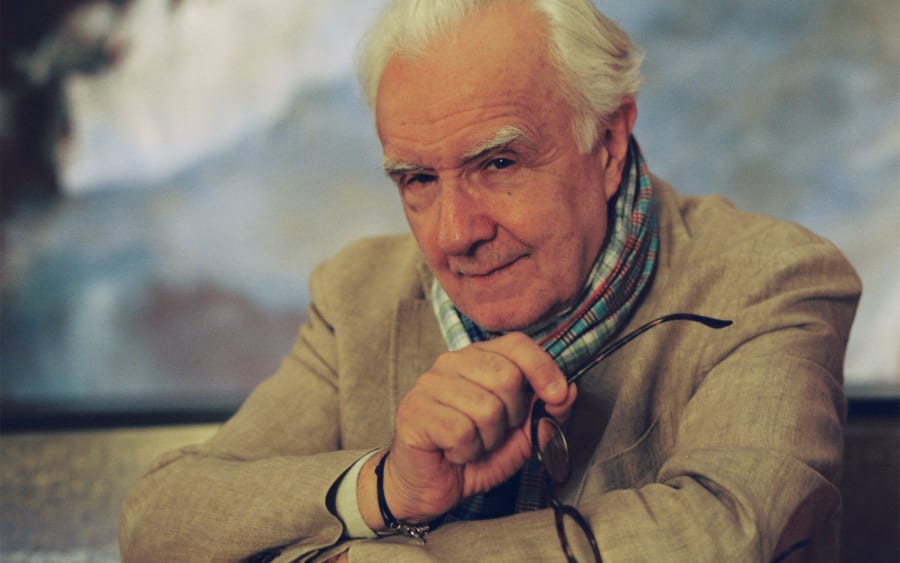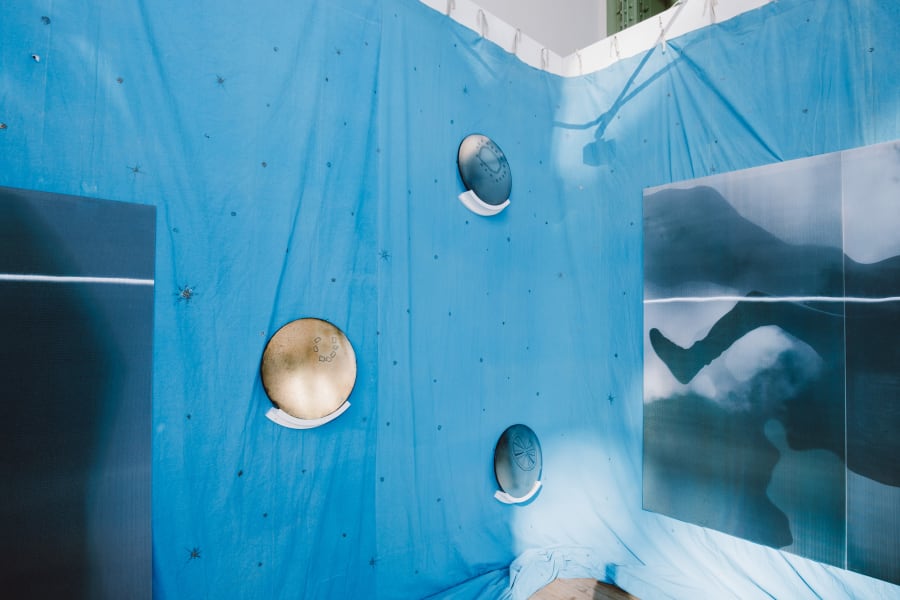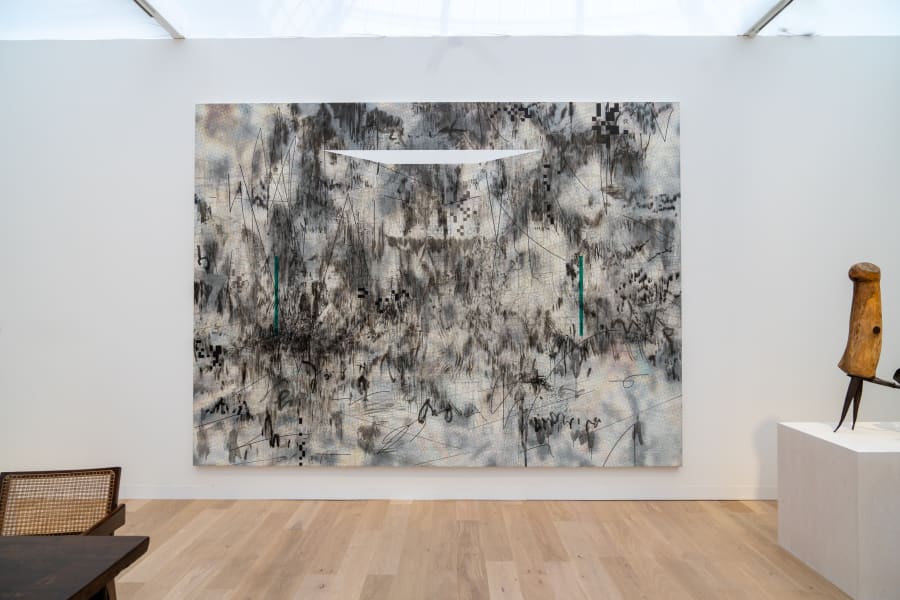Cerith Wyn Evans has been a devotee of Noh theater for over thirty years. He regularly travels to Japan where he attends as many Noh plays as possible, sometimes as often as every few days. Noh, a traditional form of Japanese theater from the 14th century, is characterized by its slow, deliberate movements, minimalist stage design, and meticulously crafted masks. The performers typically play the role of ghosts who transform into supernatural beings, with their mysterious masks and subtle, controlled movements giving them an ethereal presence.
Wyn Evans took the performing art as inspiration for his series of luminous sculptures, ‘Neon Forms (after Noh)’ (2015-2019). These suspended, three-dimensional drawings in light consist of abstract white neon knots, loops, and lines that look like an indecipherable alien calligraphy. Emanating an auratic glow, the works appear as if animated by an inner life.
Wyn Evans often hangs several of the pieces from this series in clusters. Each sculpture has a color temperature of 6500 kelvin – a cool white light that equates to Northern European daylight and leaves a lingering mental image. The works express a vital force the artist calls, ‘the illuminating gas.’ Wyn Evans uses this term in reference to the subtitle of Marcel Duchamp’s work, Étant données: 1° la chute d’eau, 2° le gaz d’éclairage [Given: 1. The Waterfall, 2. The Illuminating Gas] (1946-1966). The glass tubes of neon bulbs contain a specific type of gas extracted from the atmosphere. While once inert, these gases begin to produce light when an electrical current passes through them. If a neon tube shatters, the gas rejoins the atmosphere like a spirit waiting to take on a new form.
The artist based the design of his ‘Neon Forms (after Noh)’ on ‘kata’ diagrams – the visual notations of gestures used by actors to learn the highly complex and stylized movements of Noh performances. Indeed, even the slightest, almost undetectable gestures such as the flick of a fan, the turning over of a kimono sleeve, or the raising of a hand up to the face, express significant information about the characters and the story. In a recent conversation the artist told me, ‘I became intrigued by the notion of choreology, which is the art of transposing movement into notation… There was this ache towards the diagrammatic that found a place in the way that I’d approach these works.’ Kata diagrams fix these already rigidly codified gestures into notational charts, and then Wyn Evans translates them into three-dimensional sculptures. In this way, he distills the movement of the Noh performers’ bodies to synthesize them with the conceptual aspirations of his art.
Considering his source material as a musical score to be replayed, Wyn Evans explains, ‘you take these gestures, and you riff on them. And you never forget what Miles Davis said to musicians trying to interpret a score, “just play what’s not there.” You then give yourself license to set things in motion.’ To this end, he made his drawings for ‘Neon Forms (after Noh)’ using operations loosely inspired by Arnold Schoenberg’s 12-tone technique. He thus took the original kata diagrams and repeatedly folded, stretched, compressed, and inverted them, turned them around and upside down. As he states, ‘the same motif or the same figure appear as transformed, which is exactly what happens to the central character in any Noh play. There’s always a transformation scene where what appears to be one thing transforms into something else.’
In the process, the inflexible language of the kata diagrams decomposes into effervescent light, thereby taking on a new life. Freed from their original system, the neon pieces perform a wild, disembodied dance without the dancers.
Within the context of an exhibition, ‘Neon Forms (after Noh)’ not only act in concert with each other, but also with the visitors. As Wyn Evans says, ‘there’s an importance that I put on the primacy of a physical interaction with the thing in the same room, that it somehow then replies to your body being there.’ Indeed, photographs could never capture the sensations and intensities that directly affect the bodies of those visiting the show. Together, as these feelings accrete and are amplified, the works and the spectators vibrate in sympathy, as they become imbued with the spirit of Noh theater.
Cerith Wyn Evans is represented by White Cube (London, Hong Kong, New York, Seoul), Marian Goodman Gallery (New York, Los Angeles, Paris), Galerie Buchholz (Berlin, Cologne, New York), Taka Ishii (Tokyo, Kyoto), Fortes D’Aloia & Gabriel (São Paulo, Rio de Janeiro), and Galerie Neu (Berlin).
‘Cerith Wyn Evans: Borrowed Light Through Metz’
From November 1, 2024 until April 14, 2025
Centre Pompidou-Metz
Zoe Stillpass is a curator and researcher at Centre Pompidou-Metz.
Caption for header image: Cerith Wyn Evans, Neon Forms (after Noh XII), 2018 (Edition of 3 plus 2 artist’s proofs). Installation view at Pirelli HangarBicocca. Copyright: Photo credits Piero Basion © Cerith Wyn Evans. Courtesy of the artist, Pirelli HangarBicocca and Marian Goodman Gallery.
Published on October 31, 2024.


